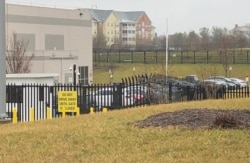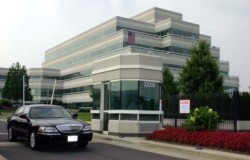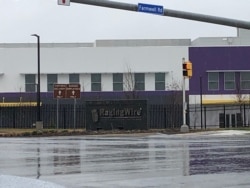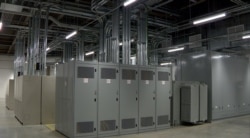Have you ever stored something in the cloud and wondered where that data goes?
You might be surprised to learn it’s in a quiet residential community located about 30 miles outside the capital city of Washington, where people jog or walk their dogs around human-made lakes, children’s teams practice on soccer fields, and teens play pick-up basketball on community courts.
The majority of the world’s internet traffic passes through the town of Ashburn in Loudoun County, Virginia, home to one of the world's major internet exchanges.
“It's amazing when you think about the amount of fiber that's in the ground,” says Buddy Rizer, executive director of economic development for Loudoun County. “Both sides of the road pretty much have fiber troughs in them. And now we're putting some fiber in the middle of the roads as well. "We want to continue to build on that fiber network."
Seventy percent of the world’s internet traffic passes through all of that fiber. That’s why Ashburn is known as Data Center Alley. The Silicon Valley of the east. The cloud capital of the world. Pretty much any email sent or received anywhere around the globe, comes through this town. If you’ve got something stored in the cloud, it’s probably in one of the 100-plus data centers located in Loudoun County.
“A lot of people, they think about the cloud and their eyes go up. Well, it's not really up,” Rizer says. “The cloud is based somewhere and, by and large, the cloud has been based here in Loudoun County, Virginia, in the data centers, the 18-million-square-feet of data centers that we have on the ground here.”
It all started when America Online moved to Ashburn back in the 1990s. AOL brought fiber and power infrastructure with it. MAE-East, one of the world’s first internet exchanges, moved to Loudoun in the late 90s after first forming in 1992.
“It was a couple guys who got together over some beers and decided that they were going to allow one another to pass traffic back and forth across the different networks that they'd been creating,” says John Day, vice president of sales and leasing for Sabey Data Centers.
Other companies followed, each new addition contributing to the creation of the most dense fiber network anywhere in the world. Tech titans like Amazon and Google now have a presence in Loudoun. Northern Virginia’s appeal includes reasonably priced land, low-cost-but-dependable electricity, access to water to help cool the equipment, and a skilled, educated population.
Today, the internet is basically housed in the data centers located in the Washington-area suburb, which is the biggest data center market in the world.
“The internet itself is really comprised of these peering points that are housed inside data centers. So without data centers, you wouldn't really have the internet,” Day says. “The infrastructure that powers the internet wouldn't be around if it weren't for the data centers that it lives in.”
Companies want their information technology infrastructure close to those peering points. So they often turn to third parties like Sabey Data Centers to host them. Sabey’s client list is confidential, but it includes one of the five biggest cloud providers in the world.
Data centers provide power, cooling and connectivity. Back-up generators ensure the power never runs out. The buildings themselves are hardened and have cooling capabilities that allow for the release of waste heat generated by the IT equipment.
The data centers ensure the computer applications used by their clients are up and running around the clock, whether it's a bank, insurance company, or e-commerce website.
“They want to ensure that all of their customers, wherever they are, can get to it through the internet,” Day says.
Security is tight. There’s a lot of privileged information to protect. With non-descript exteriors, data centers aren’t flashy. But they are quietly raking in the bucks for the Virginia county, which expects to take in $320 million in local tax revenue from data centers this year.
“A single family home is not a moneymaker for a community like ours,” Rizer says. “For every dollar they take in services, we don't get the corresponding amount of money back. Data centers, for every dollar we spend on them, we get about $15 dollars back, which is a great return on our investment.”
Rizer expects the data center business to keep booming in his county and elsewhere. Across the United States, I.T. infrastructure isn’t expected to catch up with demand until sometime late in the 2020s.











